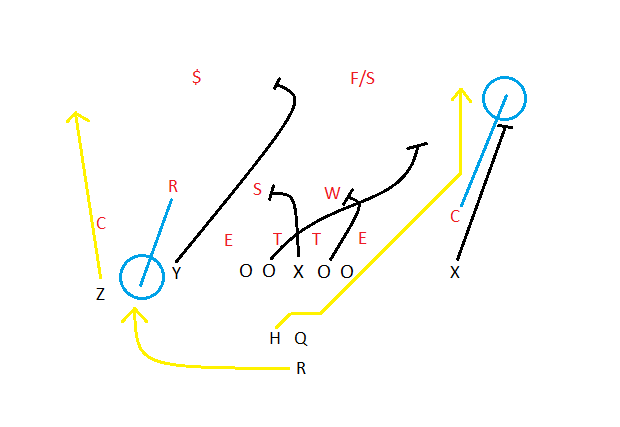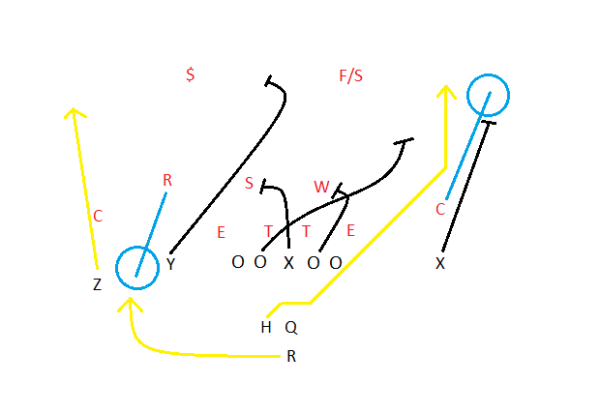History is full of stupid predictions: “Dewey defeats Truman,” “The Internet will never catch on,” “The world will end in 2012.” We can now add a fourth to this pantheon of human idiocy: Winston Shi predicting that Stanford would lose by two touchdowns to the University of Southern California on Saturday evening.
I don’t know what Stanford team will show up on any given day, but Good Stanford showed up on Saturday, and it punched USC in the teeth again and again and again.
After a terrifying first series on defense during which USC ran all over Stanford, the Cardinal D stiffened – it wasn’t great by any means, but it was manageable.
More to the point, the offense put on a show. The offensive line ripped apart the USC front seven, the receivers were open pretty much wherever and whenever they wanted, and let’s not forget, goodness gracious, Kevin Hogan sliced and diced the Trojans on one leg.
Helping the Stanford offense were its playcallers, who were absolutely excellent. USC defensive coordinator Justin Wilcox is one of the brightest young stars in college football, but his defenses have twice surrendered over 30 points to David Shaw and company during the past three years – and the other time, the Trojans gave up over 400 yards of offense.
I don’t think it’s because of any particular fault on Wilcox’s part – I think he’s positively brilliant – but Stanford shows that if you can put the right plays together it can be very hard for a defense to respond.
***
Let’s take a look at how Stanford punished USC on the flanks. Stanford’s shown that it can really pound the outside when it wants to – last year Stanford put on an outside attack coaching clinic against Oregon State – but Stanford’s identity, at least in the popular imagination, is still ground-and-pound, up-the-middle. Nevertheless, on this third-and-long screen pass to Christian McCaffrey and many more plays like it, Stanford put up points using its speed as well as its power.
At this point in the game, Stanford had a real chance to put the game away. It was late in the fourth quarter and the Cardinal were up 38-31 near midfield. An attempt to burn off clock by calling run plays had led to 3rd and 7; if Stanford got a first down it would be difficult for USC to score, and if Stanford punted USC would have plenty of time to complete a game-tying drive. On the USC sideline, Wilcox thought he was calling a conservative defense, but there is no such thing as an airtight scheme: conservative defenses are just defenses that are weak in different ways, and Stanford called the perfect play in response. (As usual, Web viewers can take a look at the video here.)
A lot of people complain about David Shaw calling screen passes on third and long. In fact, a lot of people seem to think that screen passes on third and long, regardless of who is calling the plays, is an affront to their intelligence. But in this case – and in many others – USC set up defenses where a screen pass was exactly the wrong thing to do.
In search of the first down, Stanford calls not a single screen but a double screen, attacking both sides of the field. Nevertheless, to keep things simple, both screens are variants of the same concept – the “slow screen.”
Kevin Hogan has two options on this play. Both his running backs are leaking out in the passing game – one to either side of the field. The receiver drags his man up the field and the running back exploits the space that the cornerback leaves behind.
USC’s two-deep, five-underneath zone focused on avoiding the big play, asking the cornerbacks to follow their receivers (Z and X) vertical – itself a common variant, albeit a particularly conservative one. A seven-man Cover 2 zone with these coverage rules effectively transitions into a 4-deep, 3-underneath zone when the outside receivers go deep, and that coverage offers huge opportunities in the short passing game – that is, if you can get a player to exploit the space first. The defensive playcall showed that Wilcox feared Stanford’s receivers more than anybody else, and why not? Stanford’s receivers had done whatever they pleased against USC’s back seven all day long. (That’s yet another example of how great wideouts indirectly distort defenses.)
Wilcox was trying to put pressure on Hogan while playing zone coverage behind his pass rushers. Stanford’s playcall showed that there’s more to offense than a simplistic dichotomy of conservativism and aggression: It attacked the exact point where USC’s conservatism ended and its aggressiveness began.
***
Hogan’s first read was actually to the left – it’s the quicker play, and with Hogan injured every second mattered – but once Su’a Cravens (R) settled in a zone instead of following Austin Hooper (Y) vertical, there was no point in throwing to the left.
Cravens’ decision allowed Hooper to run deep and block for McCaffrey (H) on the right. Stanford went to great lengths to open the field for McCaffrey on this play – the offensive tackles dropped deep, feigning a deep pass and pulling USC’s front four well upfield and out of the play. The interior offense linemen blocked upfield, taking out all but one of the defenders near McCaffrey. The only defender that could realistically make a play on the ball was USC’s free safety, and he’s far away from the play.
The throw is reasonably easy to make. It’s a quick and dirty one-read play. Even mediocre execution would give Stanford a good shot at the first down.
And that’s why screen passes, despite their unpopularity with fans, are so popular with coaches: not only do they take a guaranteed profit, but also, by putting fast guys in space that is often a one-on-one situation, they offer the potential for much more.
McCaffrey blazed down the sideline, and his 19-yard catch-and-run brought Stanford within five yards of field goal range. A few plays later Conrad Ukropina kicked a field goal to ice the game, Stanford slew the top team in the Pac-12, and the Cardinal returned to national relevance.
Contact Winston Shi at wshi94 ‘at’ stanford.edu.

